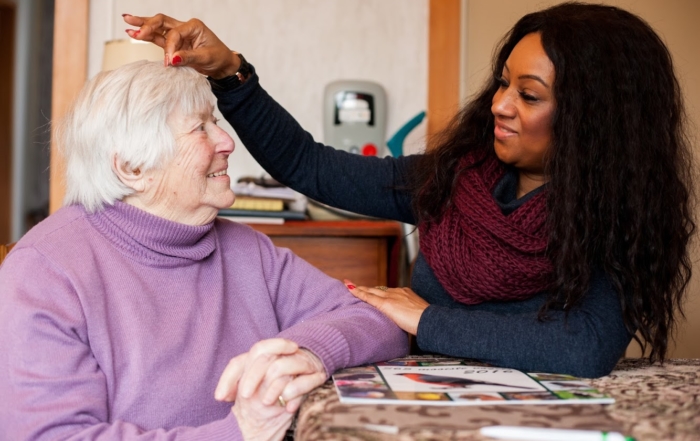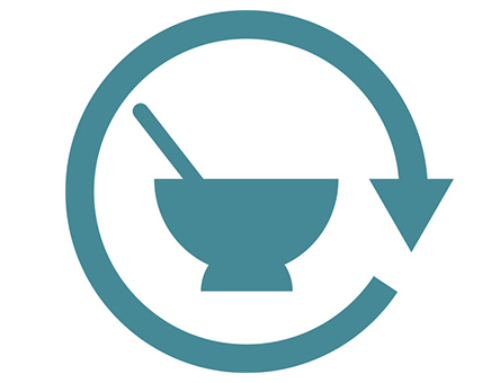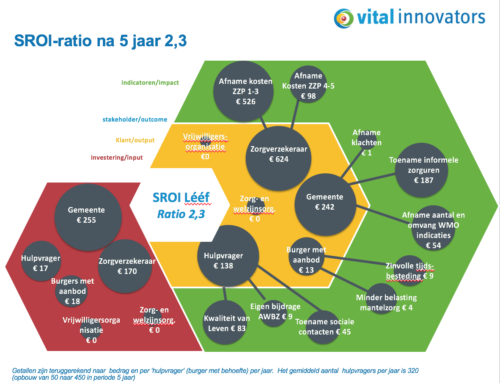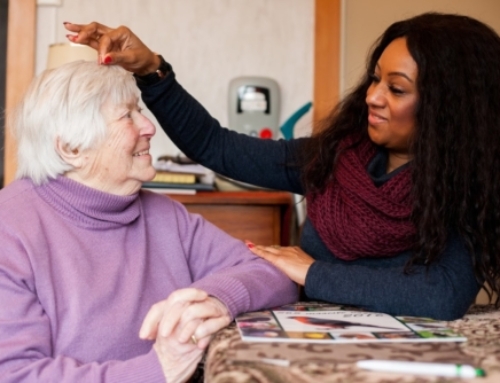Always check your assumptions. Do that through market research, but also assume that you can gain new insights during the elaboration and implementation. Make sure you can respond to that. When applying new technologies, also consider 'Social Innovation', in which people learn to work with each other and with technology in new ways.
Intention
Enjoying living at home is a wish of many, even if you become more vulnerable due to age or limitations. Moreover, 'living at home longer' is government policy. To realize that the elderly can enjoy a good quality of life in their own familiar environment (continued) live, A collaboration has been set up in the municipality of Dalfsen between care, well-being and living: from Dalfsen trial service. The trial service consists of volunteers who help to think about supporting residents, informal carers and care providers in the municipality of Dalfsen. Before an appeal is made to additional appropriate care, Based on the request for help, it is examined whether other solutions are also available. Smart technology is increasingly being used for this. The main question here is: “Which solution is right for your situation?”.
In addition to offering help, the trial service has another objective: learn which smart options are suitable as a solution and how to subsequently determine and organize them. The service was developed in a partnership between the municipality of Dalfsen, the housing associations Vechthorst and De Veste, the care organizations Rosengaerde, The sand (holly camps), Carinova, ZGR (Places of use) and RIBW GO and the social work of De Kern and the welfare organization SAAM Welzijn.
Approach
Dalfsen trial service has been closed since 2015 active and there are about 200 questions and requests received. In case of a request, the trial service always works according to a fixed approach that consists of the following parts:
- Question clarification by trained volunteers or healthcare professionals.
- Education of what could be a potential resource.
- Obtaining the tool by ordering and installing it.
- Explanation and help with using the device during a trial period. The device can be tried out for four to six weeks. After that, it is evaluated with the resident in question whether he/she is satisfied with the use of this and whether it is possible to purchase the aid..
- Dissemination of the evaluation findings to the parties involved in the partnership and society.
One of the requests for help was a request from a family to find a way to help their demented mother, living in a nursing home, can go outside independently.
Result
Things that are put in via the above approach regularly don't go as planned. Also in the case of the demented lady. The goal was to let her go outside on her own. After clarifying the question, the solution seemed obvious: a GPS application specially developed for vulnerable people. This way the location of the lady could be tracked remotely. The system had been successfully applied in comparable situations and had a quality mark. But madam saw the GPS application and found it not suitable. "I'm not going to walk with that black box, That doesn't match my beautiful evening dress at all!”. Being able to go outside was not the goal in itself, the woman also wanted to be able to stroll in her beautiful clothes. Or at least, look elegant when walking. When this was clear, A different type of GPS was searched for and after some detective work there was a beautiful medallion with mini GPS. However, a test with the location manager showed that false reports and positions often came in. For example, the accompanying app once indicated that the lady was standing in a meadow somewhere, while she was just sitting behind her desk. Another GPS product has not yet been delivered, so we are thinking hard about alternatives..
Lessons
The example of the woman with dementia is exemplary of the learning experiences that take place within the trial service. A few important recurring lessons can be drawn from these learning experiences, that take place on a number of levels:
- The clarification of the question is not sufficient. In the example, “going outside” was only part of the question. The desired outcome was strolling. The lesson is to ask for the desired outcome and not to switch to an existing offer too quickly. Demand-oriented customization must be done carefully so as not to fall into the pitfall of a supply-oriented approach.
- The existing range of healthcare technology often does not fully meet the needs we encounter in practice. Although the basic function is usually well thought out, the context is, in this case matching the clothes, insufficiently included. Suppliers must be able to learn, together with the end users, what the real user needs are and incorporate this into their offer.
- Several ministries recently concluded that nursing care in particular (to) want to use little technology. However, this is closely related to the offer, that is often insufficiently appropriate or suitable to be able to respond to the demand. The policy from various ministries should be tightened up in such a way that healthcare technology better meets the needs in the professional field.
Name: Henry Mulder
Organization: Together Wellbeing
OTHER BRILLIANT FAILURES
Sick but not pregnant
Never assume that everyone is fully informed, especially when there is new information informatie. Provide a knowledge environment in which everyone can make his or her decisions. check what [...]
Will tomorrow's eighty-plus still pay for a happy old age?
Irrational end-user behavior is difficult to predict. To map the wishes that arise from this behavior, a qualitative approach is required. In some cases, the way of trial [...]
Sick but not pregnant
Never assume that everyone is fully informed, especially when there is new information informatie. Provide a knowledge environment in which everyone can make his or her decisions. check what [...]











